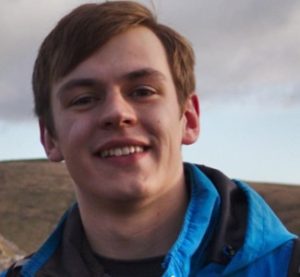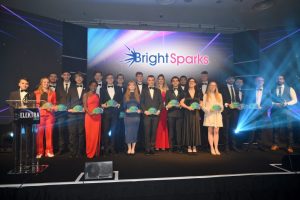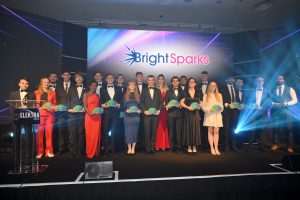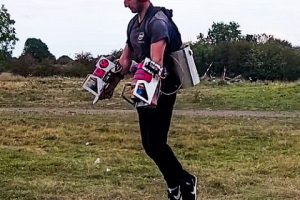Here, in our series on the latest EW BrightSparks of 2023, we highlight Sam Jones, a PhD student at Lancaster University.
Achievements
Sam is an EPSRC-ICASE PhD student in the Physics Department at Lancaster University working on a unique collaborative project with IQE on telecoms-wavelength vertical-cavity surface-emitting lasers (VCSELs) where GaSb quantum rings (QRs) are the source of the emission.
His nominator was his PhD supervisor Professor Manus Hayne (the inventor of ULTRARAM, who also won an award at the Elektras, for the University Research Readers’ Choice award).
“When Sam started his PhD in September 2020, during the pandemic, the groundwork had been laid for the design and modelling of the VCSELs optical properties, but their electrical performance was poor. Sam took the opportunity to use nextnano modelling software to resolve this.”
“In particular, he investigated the resistance contributed by band bending in the GaAs/AlGaAs heterostructures in the distributed Bragg reflector (DBR) mirrors of the device, which dominate the structure physically and electrically. With considerable insight, he combined results from nextnano with optical simulation software to design a series of telecoms wavelengths DBRs for growth by molecular beam epitaxy (MBE). During measurement of these structures, he identified contact resistance as another significant contribution to the device resistance. These provisional results were the foundation for the next stages of research which consisted of parallel investigations.”
Sam also instigated a novel Ni-based ohmic contact to p-doped GaAs, reducing contact resistance by more than an order of magnitude compared to commonly-used Ti-based approaches. This innovation, we were told, is likely to find widespread use in research environments and in GaAs-based devices such as heterojunction bipolar transistors, detectors and (single-photon) LEDs, as well as VCSELs.
Based on his combined understanding of the optical and electrical properties of DBRs, Sam developed a DBR concept – described as “ingenious and counterintuitive” – that dispensed with traditional alternating layers in favour of a continuously varying material compensation.
“This insight was founded on the realisation that the optical function of a DBR only requires periodicity, whereas the electrical properties are dramatically dependent on the ‘shape’ of the repeated form. His simulations showed that, due to band distortion effects from doping, the potential barriers formed in the conventional DBRs with well-defined layers (square wave) are all but eliminated for a triangular-wave like modulation of DBR composition. This introduced only a minor degradation of optical properties that can be restored by a 30% to 60% increase in the number of repeats. A series of custom-designed ‘triangular’ and conventional, industry-standard DBRs were grown by IQE, also demonstrating that the novel DBRs could be manufactured at scale. Experiments to determine the improvement in resistance of the DBRs are currently underway.”
Sam become accomplished in all stages of the design, growth, material characterisation, fabrication and testing of GaSb QR VCSELs.
For example, he was fully responsible for the complex design of the >100 semiconductor layers required, assisted in their growth by MBE, performed initial optical testing of the wafer (transmittance and reflectance), single-handedly fabricated the devices in the Quantum Technology Centre (QTC) cleanroom at Lancaster University, and undertook the device packaging, wire-bonding and all of the device testing.
“He is also using commercial optical device software, kindly provided by Photon Design, to model the combined electrical and optical device characteristics, and, in addition to all his other activity, is developing a laser reflectance capability for real-time in-situ monitoring of layer thicknesses during growth in the MBE.”
The complex device processing of the VCSELs, with a range of dimensions, involves multiple lithography steps requiring precise alignment, multiple dry etches, dielectric depositions with plasma-enhanced chemical vapour deposition, metallisation (sputtering and thermal evaporation), and rapid thermal annealing, we learned.
Sam became one of the most experienced users of the QTC cleanroom, and often mentors and advises other researchers within the University, including those that are nominally more senior.
In summary, his nominator told us:
“Sam has already demonstrated exceptional abilities as an engineer, achieving an advanced level of accomplishment in all aspects of device design, fabrication and testing. He is quietly, but uncompromisingly, utterly dedicated to advancing his research and that of others, and always volunteers to help, notwithstanding the large, varied and complex range of tasks that he has set himself. Sam is fully deserving of an EW BrightSparks award, not only because he is intelligent, creative and hardworking, but because he is a shining example of someone who is always ready to use his many skills for the benefit of others, as well as for his own work.”
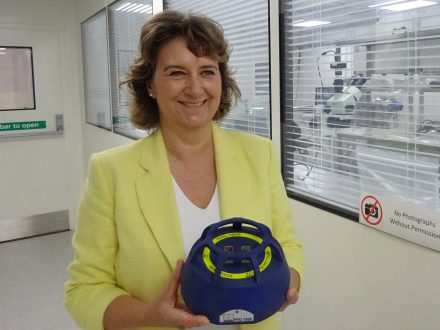 Electronics Industry Viewpoint
Electronics Industry ViewpointKaren Holland, CEO of XCAM, also shared her viewpoint on Sam’s entry.
“Sam’s postgraduate research history leaves no doubt regarding his brilliance in his field, with a significant number of ‘game-changing’ advances made during his PhD in his field related to design, growth, material characterisation, complex processing and fabrication and testing of GaSb QR VCSELs,” Karen told us.
“In addition to his excellent research capabilities, Sam demonstrates good teaching skills and a willingness to share his extensive knowledge with others.”
Community
In terms of wider community and support work, we learned that throughout his PhD Sam sought to engage a people at various stages in the world of semiconductor research and engineering.
For example, he volunteered at university open days, showing the latest devices to prospective students and parents through the use of a demonstration kit, and providing a taster of the technology required to engineer such devices.
Also, in his capacity as a post-graduate teaching assistant, he helped three cohorts of undergraduate students develop their practical lab work skills.
Sam also supervised a summer internship project, opening up real-world research to an undergraduate student.
Under his supervision, the students developed software to semi-automate the process of determining the thickness of semiconductor layers using data from the in-situ laser reflectance monitoring system for the MBE (molecular beam epitaxy) mentioned above.
See also: Elektra Awards 2023 – The Winners
 Electronics Weekly Electronics Design & Components Tech News
Electronics Weekly Electronics Design & Components Tech News
